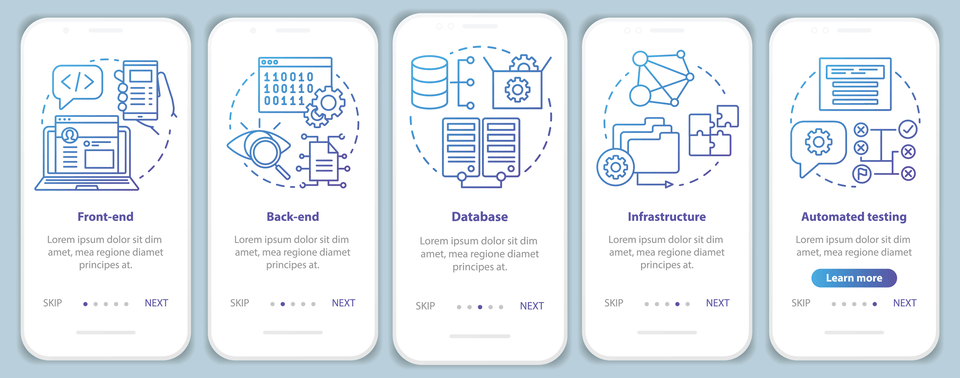Traditional Vs Agile Software Development Methodologies
Содержание
Rather, agile is a group of methodologies that demonstrate a commitment to tight feedback cycles and continuous improvement. The software developers, analysts, testers, and the customer work together to accomplish the features assigned to the sprint. The team conducts daily meetings to keep everyone on track.
Cycle is finished, it’s presented to the customers for feedback. You then incorporate the input from your testers before moving onto the next cycle. From there, select team members to work on the project and allocate resources. Create a timeline or a swimlane process map in Lucidchart to delineate responsibilities and clearly show when certain work needs to be completed for the duration of the sprint.
Essential Tips for Managing a Software Development Team Covered in the New Article by Intetics – PR Web
Essential Tips for Managing a Software Development Team Covered in the New Article by Intetics.
Posted: Wed, 14 Sep 2022 16:04:35 GMT [source]
Openness, trust, and autonomy are emerging as the cultural currency for companies who want to attract the best people and get the most out of them. Such companies are already proving that practices can vary across teams, as long as they’re guided by the right principles. An agile team unites under a shared vision, then brings it to life the way they know is best. Each team sets their own standards for quality, usability, and completeness. Their “definition of done” then informs how fast they’ll churn the work out. Although it can be scary at first, company leaders find that when they put their trust in an agile team, that team feels a greater sense of ownership and rises to meet management’s expectations.
Track Your Sprints Effectively With Sprint Lists
Using time-boxed and fixed schedule sprints, the team delivers a service, product, or new features at a higher frequency with a strong level of predictability. But if you approach the Agile method for your mobile app or web app development, this risk is reduced. Developing a product in a sprint allows the team to find out whether they are on track.
Sit down with your team and stakeholders to brainstorm and identify business opportunities and estimate time and costs to complete each project. Then you can determine which projects are feasible and most valuable, and prioritize your project backlog from there. Agile encourages a high degree of input and collaboration between the client and development team. This leads to happier clients because there is transparency throughout the process and developers are better informed on client needs and wants. The methodology takes its name from the idea that the beneficial elements of traditional software engineering practices are taken to “extreme” levels.
- Enhance agility through continuous attention to technical excellence and good design.
- These principles direct the team in the attitude they must take and the mindset they must adopt to deliver consistently.
- Measure progress by the amount of working software completed.
- Instead, it is a way of thinking about collaboration and workflows and it is a set of values which guide our choices in regards to what we make and how we make it.
- Each build is incremental in terms of features; the final build holds all the features required by the customer.
Waterfall methodology is considered the ‘traditional’ software development, consisting of a linear model with sequential phases. When you group each task or phase one at a time, you will need to meet each specific goal before moving on to the next stage, but there is no backtracking to the previous phases. A Spiral methodology is an extension of Waterfall methodology that adds rapid prototyping to reduce risk and accommodate larger scale projects. By now you may have noticed that the concept of “agile methodology” is itself an agile idea, responding to the needs of its customers through changing times. Keep this in mind as we take a brief look at a variety of agile frameworks, which carry different names and often vary from one implementation to another. Agile is an approach to software development that seeks the continuous delivery of working software created in rapid iterations.
By Team Function
If you have a fresh idea brewing in your mind and but don’t have enough time to do this research then you can contact to trusted companies like Digitalogy. They will help you to find the best agile software developers as per your requirements. These disadvantages hinder project delivery in terms of cost, effort, time and end up having a major impact on customer relationships. For example, the user might have given initial requirements to analyze their products in terms of sales. When your system is outdated, unnecessary, or ready to be replaced, it goes into the retirement phase. This stage includes all end-of-life activities, such as notifying customers and migrating the system release out of production.
During project inception, the customer splits the initial set of requirements into User Stories. The Scrum Master or Product owner organizes these User Stories and segregates them into different Sprints. In general, Sprint contains 3-4 User Stories to be delivered in 4 to 5 weeks, these are approximate figures and they will be decided agile development methodologies based the complexity of user stories. Once the Sprint planning is done, the selected User Stories are once again split into Tasks so that the developer can have a clear roadmap to deliver quality output. At the end of each Sprint, the customer gets a chance to review and predict the final outcome and can propose changes if any.
Agile methodology is suitable for businesses that are looking to transform the way they manage their projects and the way they operate them as a whole. It helps teams manage work more efficiently and effectively and deliver the highest quality product while staying within the budget. It works by breaking projects down into a little bit of user functionality, prioritising them, and then delivering them continuously in 2-4 cycles called Sprints or Iterations. In one short Sprint (2-4 weeks), a full development cycle is performed.

The document — or declaration — was created and signed, in 2001, by leaders in software development. They were fed up with less democratic methods prevalent at the time. Instead, they wanted a more collaborative, customer-centric model.
A Case Study Of Agile Software Development For Safety
Because we believe each team must forge their own path to agility, you won’t find highly prescriptive information on this site. What you will find, however, is a no-nonsense guide to working iteratively, delivering value to your customers, and embracing continuous improvement. Read it, discuss it with your team, and make the changes that make sense to you. Today, many agile teams combine practices from a few different frameworks, spiced up with practices unique to the team. Some teams adopt some agile rituals (like regular stand-ups, retros, backlogs, etc.), while others created a new agile practice .
The sponsors, developers, and users should be able to maintain a constant pace indefinitely. A DevOps engineer has a unique combination of skills and expertise that enables collaboration, innovation, and cultural shifts within an organization. Manage your Red Hat certifications, view exam history, and download certification-related logos and documents. Browse Knowledgebase articles, manage support cases and subscriptions, download updates, and more from one place.
Focused on delivering strategically aligned business benefits for the best possible return on investment. Remember to constantly evaluate your team’s progress at regular intervals. This will help you fine-tune every future sprint and process. Must actively collaborate to clearly understand and implement customer feedback.
What Is Lean Software Development?
After all, this methodology is called “agile” for a reason. Present the working product or software to stakeholders and customers. Test/QA. Complete thorough testing and documentation of results before delivery. Lucidchart can help you visualize your code through UML diagrams or demonstrate user flows so everyone understands how the system functions and how they can build upon it further. Once you have identified the project, work with stakeholders to determine requirements. You might want to use user flow diagrams or high-level UML diagrams to demonstrate how the new feature should function and how it will fit into your existing system.

Requirements/User Stories can be provided periodically implying better chances for mutual understanding among developer and user. Documentation assumes high priority and becomes expensive and time consuming to create. By submitting, you consent to KPI Partners processing your information in accordance with our Privacy Policy. We take your privacy seriously; opt out of email updates at any time. Visualizing the process helps everyone stay on the same page and ensures that effort is focused on work that has high priority and high impact.
Agile Methodology: What It Is, How It Works, And Why It Matters
Plans regarding the number of iterations, the duration and the scope of each iteration are clearly defined in advance. Agile project management is an iterative approach to managing software development projects that focuses on continuous releases and customer feedback. During the first step of the agile software development life cycle, the team scopes out and prioritizes projects. Some teams may work on more than one project at the same time depending on the department’s organization. Scrum is an Agile framework that focuses on cross-functional teamwork, accountability, and iteration in order to develop, deliver, and support complex products. It’s primarily used for software development, but its principles can be applied to other project management teams too.

Rapid Application Development methodology is the ideal way to take maximum advantage of the development software with minimal investment costs. RAD is a condensed model that allows quick adjustments to fast track https://globalcloudteam.com/ results. The four stages of RAD methodology are requirements planning, user design, construction, and cutover, but you repeat the user design and construction phases until you meet the project requirements.
This type of methodology is used when customers are constantly changing demands or requirements, or when they are not sure about the system’s performance. If you want to take full advantage of the agility and responsiveness of DevOps, IT security must play a role in the full life cycle of your apps. For example, if you’re on a queue-oriented team like IT, kanban provides a solid foundation for your agile practice.
Agility In The Avionics Software World
Like Scrum, Kanban is a process designed to help teams work together more effectively. Lean software development methodology follows the principle “just in time production.” The lean method indicates the increasing speed of software development and reducing costs. Scrum is perhaps the most popular agile framework in use today but not all agile is Scrum and, honestly, not all Scrum is agile. Scrum teams consist of team members, a Scrum master, and a product owner.
What Is Feature Driven Development Fdd?
Individuals and interactions − In Agile development, self-organization and motivation are important, as are interactions like co-location and pair programming. At the end of the iteration, a working product is displayed to the customer and important stakeholders. Give them the environment and support they need, and trust them to get the job done.
What Is Agile Development?
Since the Agile Manifesto was created, however, Agile has swelled in popularity. It now provides an organizational framework for creating any kind of product — from building systems to video games to medical devices. In Waterfall, each team is responsible for a process step and fully completes their task before handing it over to the next team. In Agile, a small increment is completed, preferably by a cross-functional team. The result, in theory , is a process that’s more responsive to change.

Leave Comment